#2 June 1886
Photo


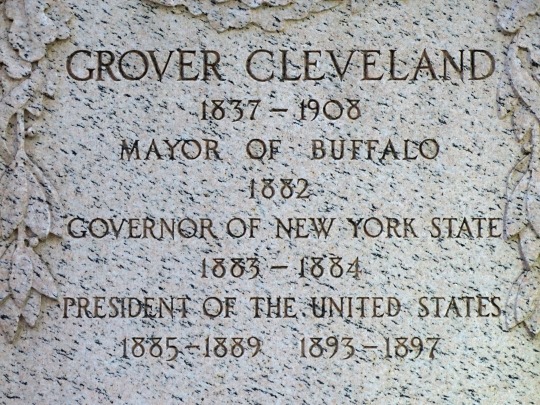
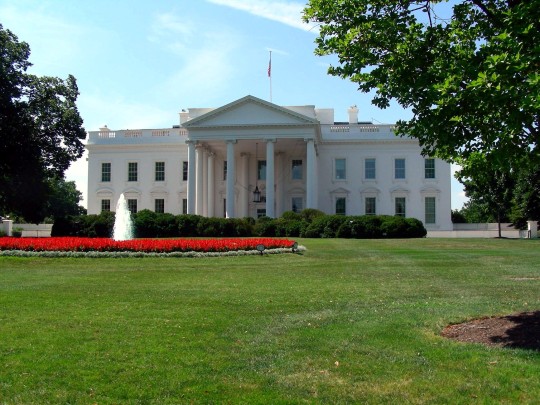
U.S. President Grover Cleveland married Frances Folsom in the White House on June 2, 1886; she was 27 years his junior.
#President Grover Cleveland by Bryant Baker#Buffalo#New York#summer 2018#Washington DC#White House#Buffalo City Hall#original photography#travel#architecture#cityscape#sculpture#1600 Pennsylvania Avenue NW#USA#James Hoban#Neoclassical style#Grover Cleveland#wedding#married#2 June 1886#anniversary#US history
0 notes
Text
2.12 The Chief Super’s Party

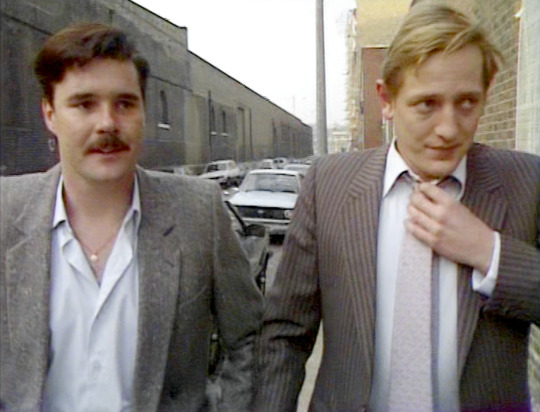







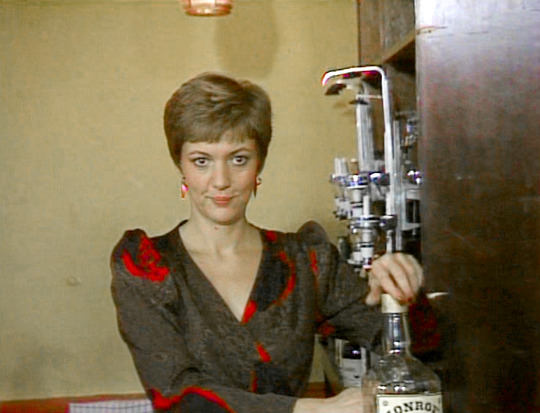


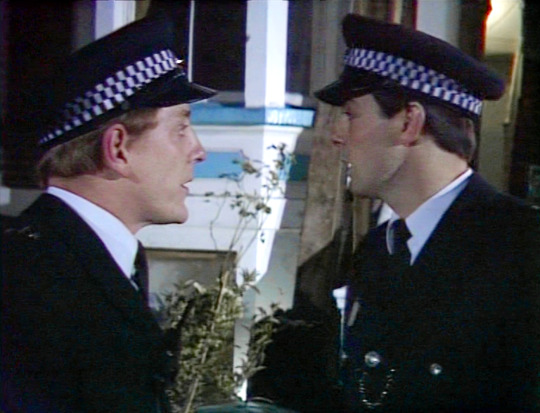

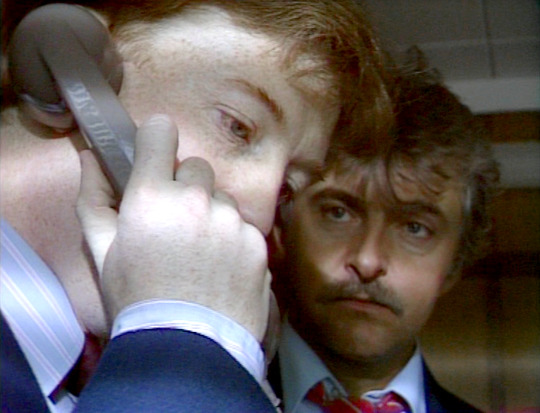
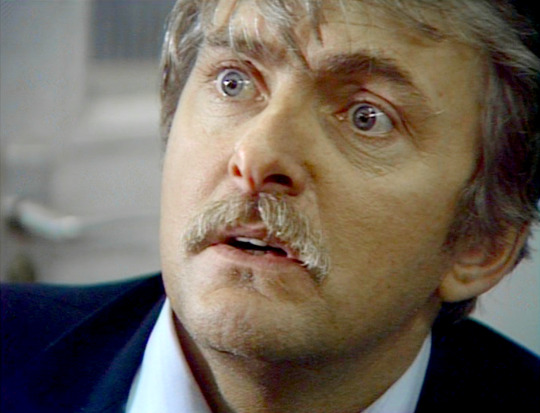
I think this is the first episode I’d count as a classic. Ted’s drink driving cock-up, Roy coming to his rescue (and getting one over Charles in the process), all the men trying it on with June and Viv (and Frank succeeding with Viv wtf—they really should’ve brought that up when she joined CID), some nice Jim & Taffy moments, Mike wandering around looking particularly pretty, and a good helping of Bob/Roy just to round it all off.
Final episode for Litten & Muswell (good riddance) and Lyttleton (yawn).
#the bill#the bill photoset#roy galloway#jim carver#ted roach#bob cryer#mike dashwood#june ackland#viv martella#reg hollis#frank burnside#yorkie smith#taffy edwards#dave litten#tom penny#the bill: series 2#the bill: 1886#the bill: episode: the chief supers party#the bill: last episode
4 notes
·
View notes
Text
Still liable to changes, but I have at last placed every single story into my chronology! I have also made some changes to the order of stories placed previously, based either on new information or their vibes. Comments and feedback are much appreciated.
The ‘Gloria Scott’ - Summer 1875 [1] (Framing: Winter 1882-3?)
The maths as stated don’t work, as 1855 + 30 = 1885, and these events can’t occur after A Study In Scarlet. 1875 would have to be Holmes’s second year of college.
The Musgrave Ritual - Spring 1879 (Framing: Winter 1882-3?)
It is stated to have been four years since Holmes last saw Musgrave. Holmes mentions telling Watson about the events of ‘Gloria Scott’. Watson must be living at 221b at the time, as his intro describes Holmes’s extremely messy habits in terms of lodging with him.
A Study In Scarlet - January to March 1881
Watson states the date he discovered Holmes’s profession explicitly as the 4th of March, which was several weeks after they moved in together. I find it likely that it was at most mid-January when they met, and that Watson spent February observing Holmes’s habits and trying to figure him out.
The Resident Patient - October 1881
Watson describes these events as being ‘towards the end of the first year during which Holmes and I shared chambers’, and then specifies that it was October.
The Valley Of Fear - January 1882 [2]
It is stated to be ‘in the late eighties’, but Holmes appears to still be getting used to Watson’s sense of humour, which he claims is ‘developing’, which points to it being earlier while Watson is still recovering from his illness. Any later and Holmes would already be very familiar with his closest companion’s personality. It cannot be any earlier than 1882 however, since January 1881 is taken up by the events of A Study In Scarlet.
The Speckled Band - April 1883
The Yellow Face - Summer 1883
The Beryl Coronet - February 1884
The Copper Beeches - Early Spring 1884
Charles Augustus Milverton - Winter 1884
I get the feeling this is an earlier case, as Watson’s attitude is oddly naïve when it comes to morality and the ability of the law to handle Milverton. I cannot see him behaving like this/holding these beliefs if he has already experienced Moriarty with Holmes for instance. He is also very jumpy while he and Holmes are performing their burglary.
The Hound Of The Baskervilles - October 1885 [3]
Mortimer’s stick is dated 1884, and Holmes notes this was five years ago (making it 1889), but Watson neither appears to be married nor in medical practice, and since this story was explicitly written as to have occurred before Holmes’s ‘death’, this precludes it being set after 1888.
The Greek Interpreter - Summer 1886?
The Reigate Squires - April 1887
The Sign Of Four - July 1887 [4]
It is stated to be July (later mistakenly stated as September) 1888, but this contradicts both SCAN (March 1888) and FIVE (September 1887). There also appears to be a pearl missing as Mary describes their delivery.
The Cardboard Box - August 1887
Holmes mentions both A Study In Scarlet and The Sign Of Four by name -- which implies that Watson is a very speedy writer, as this would be only a few weeks later. However, this may be taken as self promotion on Watson’s part.
The Noble Bachelor - Autumn 1887
This story is dated to 1887 via Lord St. Simon’s age, but Watson is soon to be married -- which is not possible if he has not yet met his fiancée. Dating SIGN to July 1887 fixes this discrepancy.
A Scandal In Bohemia - March 1888
Watson explicitly dates the start of this case to the 20th of March 1888, and states that he hasn’t seen Holmes for several months after his marriage (which would be in the late autumn to winter of 1887)
The Stockbroker’s Clerk - June 1888
Watson states that he acquired his practice ‘shortly after’ his marriage, and that he was too busy to visit Holmes at Baker Street for three months. Counting most of March as the first month (per SCAN), that takes us to the June he states, which is the first time Holmes has visited Watson at his practice.
The Naval Treaty - July 1888
[The Second Stain - July 1888**]
I take it that the story of this name is heavily if not entirely fictionalised. This is when the real events that inspired it occurred.
The Crooked Man - Summer (August?) 1888
The Five Orange Pips - September 1888 [5]
It is stated to be September 1887, but even if SIGN occurred in July of that year, Watson and Mary have not married yet for him to be ‘staying at Baker Street’ while she is away visiting her (dead) mother.
The Boscombe Valley Mystery - Spring 1889
The Man With The Twisted Lip - June 1889
I place this after BOSC, as Holmes takes it as a given that Watson’s wife will not object to him sending a note and running off on a case in the middle of the night. (I suspect he’s wrong and will be due a bollocking after breakfast)
The Engineer’s Thumb - Summer 1889
The Dying Detective - November 1889
Watson describes this as happening in his ‘second year of marriage’, which, 1888 being his first, works out as 1889.
A Case Of Identity - September 1890
Holmes comments in REDH that the case of Mary Sutherland occurred ‘the other day’.
The Red-Headed League - October 1890
The Blue Carbuncle - December 1890
Watson states it to be ‘the second morning after Christmas’, making it the 27th. When discussing cases that didn’t involve a crime, Holmes cites the events of SCAN, IDEN, and TWIS. This also lines up with the publication order, BLUE being the seventh short story, and Watson states that of the ‘last six cases’ he has written up, three of them were legally free of crime (morally however…)
The Final Problem - April to May 1891
Holmes has apparently been working in France since ‘the winter of 1890’ when he suddenly shows up in Watson’s consulting room on the 24th of April. His ‘death’ occurs on the 4th of May.
The Empty House - March 1894
The Norwood Builder - Summer 1894
Stated to take place ‘several months’ after Holmes’s return. Watson has moved back to Baker Street and sold his practice.
Silver Blaze - Late Summer 1894
(I would like to set Silver Blaze to be after NORW, since I think Holmes and Watson deserve a fun case after that one. I believe it to be post-hiatus since Watson is evidently resident in Baker Street and does not appear to be in practice at this time.)
The Golden Pince-Nez - November 1894
The Red Circle - Winter 1894
Watson is living at Baker Street, and Holmes refers to his medical practice in the past tense.
The Solitary Cyclist - April 1895
The Three Students - 1895
Black Peter - July 1895
The Bruce-Partington Plans - November 1895
The Veiled Lodger - Early 1896
The Shoscombe Old Place - 1896
The Missing Three-Quarter - February 1896-7?
Described as occurring ‘seven or eight years ago’ from the time of writing, presumably 1904.
The Devil’s Foot - March 1897
The Abbey Grange - Winter 1897
Wisteria Lodge - March 1898 [6]
It is stated to be March 1892, but this is impossible as Holmes is presumed dead at that time. It also can’t be March ‘91 as Holmes is too busy at that time, and referencing REDH eliminates March ‘90 or any year earlier. Further, Holmes complains of boredom due to a lack of cases, which eliminates 1894 due to a very high number of cases in that year (he also would only have been back about two weeks at that point). Holmes is also busy in March ‘95, ‘96, and ‘97. It is not until 1898 that there may be time to be bored by March.
The Six Napoleons - Late May/Early June 1898
It must be the end of May or the start of June, as Beppo was arrested and sentenced to a year in prison in late May of the previous year. (I’d like to set this one near DANC, since Holmes deserves the praise.
The Dancing Men - July 1898
Mr Cubitt says that he met his wife while in London ‘for the jubilee last year’, and that Elsie received a letter from America ‘about a month ago, at the end of June’.
The Sussex Vampire - November 1898
I date this story to after 1897, as that is the year vampires rose significantly in the public consciousness.
The Retired Colourman - Summer 1899
Amberley married his wife in 1897, and Holmes comments that the events that have resulted in their contact with him have occurred ‘within two years’.
The Priory School - May 1901?
Years listed with regard to Lord Holdernesse date the story post 1900, and wording makes it seem that that is not the present year.
The Disappearance of Lady Frances Carfax - Spring/Summer 1901?
The Problem Of Thor Bridge - October 1901
The Three Garridebs - June 1902
The Illustrious Client - September 1902
The Blanched Soldier - January 1903
Holmes claims that Watson has ‘deserted [him] for a wife’.
The Mazarin Stone - Summer 1903
Watson is visiting Baker Street, and comments that nothing has changed in his absence, which infers this to occur after his second marriage. He also comments that a dummy of Holmes has been ‘used before’, referencing the events of EMPT.
The Three Gables - 1903?
Watson has not seen Holmes ‘in some days’.
The Creeping Man - September 1903
As originally published, the date is stated as September 1902, but when collected in Case-Book, this changes to 1903. I place it in 1903 as Watson is not living at Baker Street at this time, having been summoned by a note from Holmes.
The Lion’s Mane - July 1907
Holmes is retired
His Last Bow: The War Service Of Sherlock Holmes - August 1914
Holmes has been undercover for the past two years.
Additionally:
This chronology was started in direct opposition to and due to frustration with Baring-Gould's chronology. Any comments or suggestions based on it will be disregarded.
It is my aim with this chronology to take into account all stated dates, and take them as correct except for where they blatantly contradict others. (e.g. SIGN being dated to either July or September 1888, when FIVE references Watson's wife in September 1887 and SCAN refers to his marriage in March 1888; Wisteria Lodge being dated to March 1892 when Holmes is 'dead' at this time)
It is also my intention that Watson is only married twice, the first time to Mary Morstan in late 1887 and the second to an unknown Mrs Watson in early 1903 (being strictly canonical, my own headcanons of him retiring to Sussex with Holmes aside)
I estimate that Holmes was born January 6th 1857, making him 18 at the time of GLOR and 24 at the time of STUD. Also by this estimate he would be 57 at the time of His Last Bow.
I estimate that Watson was born 23rd May 1853, making him 27 at the time of STUD. This would make him 61 at the time of His Last Bow.
#sherlock holmes#acd canon#acd holmes#i reject your chronology and substitute my own#watson's birthday is pure headcanon#i just thought it would be fun for it to be the day after acd's#i have not got my maths wrong for his age in study by the way - he just hasn't had his birthday yet
94 notes
·
View notes
Text

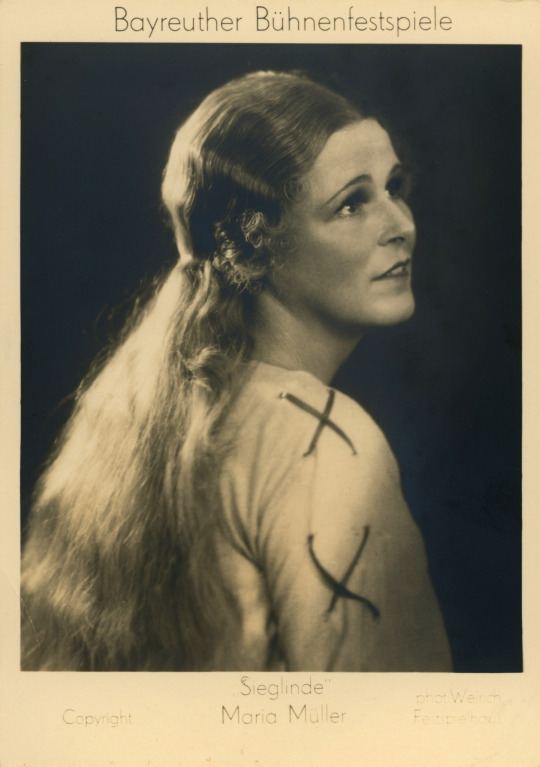




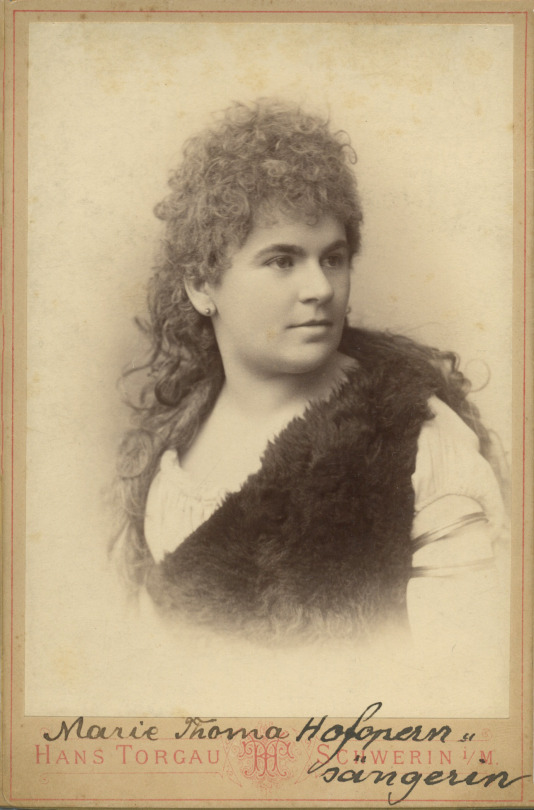
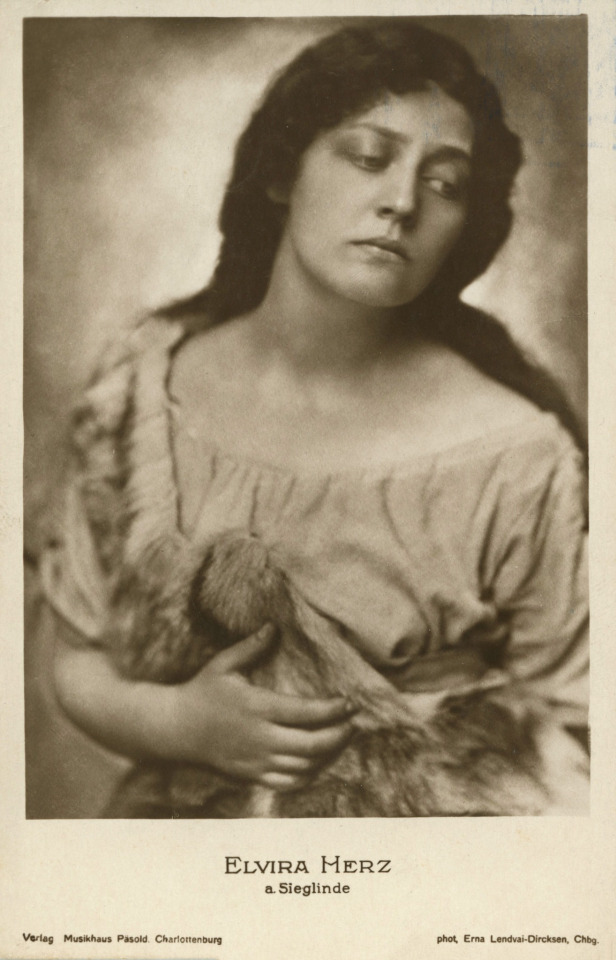
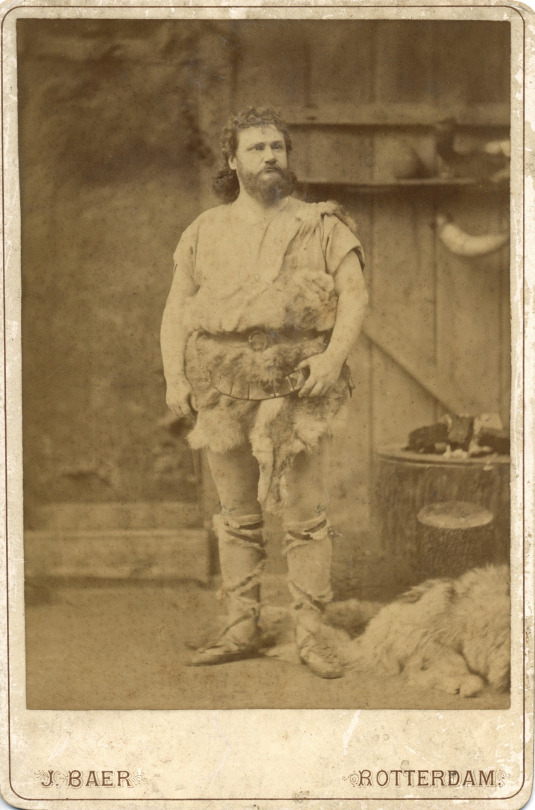


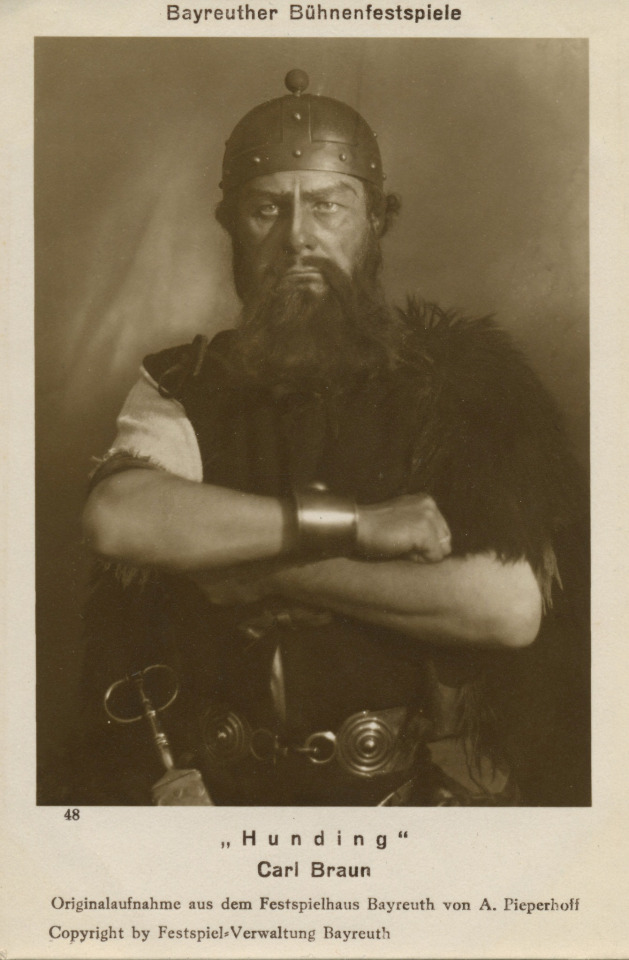

„WALKÜRE“ R. Wagner / FIRST ACT
Some Sieglindes, Siegmunds and Hundings
Maria Müller (29 January 1898 – 15 March 1958); Czech-Austrian lyric/dramatic soprano, Emanuel List (22 March 1888 - 21 June 1967; Austrian-American bass and Franz Völker (31 March 1899 – 4 December 1965); dramatic tenor, Bayreuth, 1933
Maria Müller as Sieglinde, Bayreuth, 1937
Martha Leffler-Burckhardt (16 June 1865 -14 May 1954); German soprano as Sieglinde, Bayreuth, 1908
Rose Pauly-Dressen (15 March 1894 – 14 December 1975); Hungarian dramatic soprano as Sieglinde, Frankfurt, ?
Martha Selle as Sieglinde, Breslau, ?
Florence Easton (25 October 1882 – 13 August 1955); English dramatic soprano as Sieglinde, Berlin, ?
Marie Thoma as Sieglinde, Schwerin, ?
Elvira Herz as Sieglinde, Berlin, ?
Adolf Gröbke ? (26.5.1872 -16.9.1949); German tenor as Siegmund, Rotterdam, ?
Lauritz Melchior (20 March 1890 – 18 March 1973); Danish-American heldentenor as Siegmund, Bayreuth, 1924, 1925 and 1931
Fiorenzo Tasso (1901 - 29. 3. 1976); French tenor as Siegmund, Milan, 1945
Carl Braun (2 June 1886 – 24 April 1960); German bass as Hunding, Bayreuth, 1925, 1927, 1928 and 1930
Lorenz Corvinus (20 July 1870 - 18 January 1952); German bass as Hunding, Bayreuth, 1908
#classical music#opera#music history#bel canto#composer#classical composer#aria#classical studies#maestro#chest voice#Die Walküre#The Valkyrie#Richard Wagner#Wagner#Der Ring des Nibelungen#The Ring of the Nibelung#Norse mythology#Völsunga saga#Poetic Edda#Sieglinde#classical musician#classical musicians#classical voice#musician#musicians#music education#music theory#history of music#historian of music#classical
20 notes
·
View notes
Text
Kismet Characters & Family Trees Part Four:



Liam Kane (1926) HUFFLEPUFF m. Reagan O'Connell (1926) RAVENCLAW (1947):
1. Spencer Liam Kane (1950) GRYFFINDOR m. Sadira Amari Kane (1948) NA (1968):
a) Selene Sadira Kane (9 May 1968) NA m. Beaumont DeRose (1967) NA (1991)
i) Piper DeRose (9 June 1994)
ii) Amara DeRose (6 March 1996)
iii) Felix Sebastian DeRose (1 August 1999)
b) Soraya Zoya Kane (17 July 1972)
c) Sebastian Christopher Kane (1 August 1977) m. Theodore Nott (21 October 1979) SLYTHERIN (2005):
aa) Benjamin Christopher Kane-Nott (20 May 2008) GRYFFINDOR m. Nicki Zabini (14 March 2014) HUFFLEPUFF (2033):
ai) Torin Theodore Kane-Nott (29 October 2036) SLYTHERIN
aii) Quaid Sebastian Kane-Nott (14 August 2038) GRYFFINDOR
aiii) Sabrina Aspen Kane-Nott (17 March 2042) HUFFLEPUFF
aiv) Briella Katherine Kane-Nott (6 July 2045) SLYTHERIN
bb) Spencer Thelonius Kane-Nott (3 July 2010) SLYTHERIN m. Cedrella Potter (21 October 2010) SLYTHERIN (2036):
ai) Logan Theodore Kane-Nott (23 March 2040) GRYFFINDOR
aii) Zeke Harry Kane-Nott (21 January 2042) SLYTHERIN
aiii) Nolan Everett Kane-Nott (11 November 2044) RAVENCLAW
aiv) Westley Sebastian Kane-Nott (9 December 2046) GRYFFINDOR
cc) Sadira “Sadie” Aster Soraya Kane-Nott (10 September 2013) RAVENCLAW m. Rowan Wood (14 March 2009) GRYFFINDOR (2037):
ai) Sebastian “Bash” Oliver Wood (22 Mary 2040) GRYFFINDOR
aii) Soren Rowan Wood (30 July 2043) RAVENCLAW
aiii) Soraya Theodora Wood (10 June 2046) SLYTHERIN
Cantankerous Nott (1902) SLYTHERIN m. Céline Volant (1908) RAVENCLAW (1933):
1. Tabitha Nott (1936) SLYTHERIN m. Titus Avery Senior (1927) SLYTHERIN (1954):
a) Titus Avery Junior (1956) SLYTHERIN m. Scarlett Lympsham (1982) SLYTHERIN) (1996):
i) Charlotte Rose Avery (9 October 1997) adopted by Emmeline and Mona Vance in 1999 becoming Charlotte Rose Avery Vance RAVENCLAW
b) Aurelius Avery (1959) SLYTHERIN m. Anna Kama (1959) SLYTHERIN (1975):
i) Aelius Avery (1976) SLYTHERIN m. Dasha Dolohov (1974) SLYTHERIN (1996):
aa) Dmitri Aelius Avery (3 March 1997) SLYTHERIN
ii) Aeliana Avery (1978) GRYFFINDOR m. Holden Ledbury (1979) GRYFFINDOR (1996):
aa) Evelynn Aeliana Avery (3 October 1997) adopted by Emmeline and Mona Vance in 1998 as Evelynn Aeliana Avery Vance SLYTHERIN
2. Thaddeus Cantankerous Nott (1939) SLYTHERIN m. Aster Rosier (1961) SLYTHERIN (1978):
i) Theodore Thaddeus Nott (21 October 1979) - secret son of Thelonius Nott - SLYTHERIN m. Sebastian Kane (1 August 1977) NA (2005):
aa) Benjamin Christopher Kane-Nott (20 May 2008) GRYFFINDOR m. Nicki Zabini (14 March 2014) HUFFLEPUFF (2033):
ai) Torin Theodore Kane-Nott (29 October 2036) SLYTHERIN
aii) Quaid Sebastian Kane-Nott (14 August 2038) GRYFFINDOR
aiii) Sabrina Aspen Kane-Nott (17 March 2042) HUFFLEPUFF
aiv) Briella Katherine Kane-Nott (6 July 2045) SLYTHERIN
bb) Spencer Thelonius Kane-Nott (3 July 2010) SLYTHERIN m. Cedrella Potter (21 October 2010) SLYTHERIN (2036):
ai) Logan Theodore Kane-Nott (23 March 2040) GRYFFINDOR
aii) Zeke Harry Kane-Nott (21 January 2042) SLYTHERIN
aiii) Nolan Everett Kane-Nott (11 November 2044) RAVENCLAW
aiv) Westley Sebastian Kane-Nott (9 December 2046) GRYFFINDOR
cc) Sadira “Sadie” Aster Soraya Kane-Nott (10 September 2013) RAVENCLAW m. Rowan Wood (14 March 2009) GRYFFINDOR (2037):
ai) Sebastian “Bash” Oliver Wood (22 Mary 2040) GRYFFINDOR
aii) Soren Rowan Wood (30 July 2043) RAVENCLAW
aiii) Soraya Theodora Wood (10 June 2046) SLYTHERIN
3. Thelonius Rodrigo Nott (1960) - secret affair with Reigna Rodríguez - raised by Cantankerous and Céline; has affair with Thad's wife Aster and produces Theo secretly (d. 1984)
Emerson Rosier (1886) SLYTHERIN m. Drusilla Rosier (1888) SLYTHERIN (1909):
1. Enzo Rosier (1910) SLYTHERIN m. Alma Burke (1913) SLYTHERIN (1929):
a) Ezekiel Rosier (1930) SLYTHERIN m. Wanda Black (1930) SLYTHERIN (1955):
i) Evan Rosier (1959) SLYTHERIN
ii) Aster Rosier (1961) SLYTHERIN m. Thaddeus Cantankerous Nott (1939) SLYTHERIN (1978):
i) Theodore Thaddeus Nott (21 October 1979) - secret son of Thelonius Nott - SLYTHERIN m. Sebastian Kane (1 August 1977) NA (2005):
aa) Benjamin Christopher Kane-Nott (20 May 2008) GRYFFINDOR m. Nicki Zabini (14 March 2014) HUFFLEPUFF (2033):
ai) Torin Theodore Kane-Nott (29 October 2036) SLYTHERIN
aii) Quaid Sebastian Kane-Nott (14 August 2038) GRYFFINDOR
aiii) Sabrina Aspen Kane-Nott (17 March 2042) HUFFLEPUFF
aiv) Briella Katherine Kane-Nott (6 July 2045) SLYTHERIN
bb) Spencer Thelonius Kane-Nott (3 July 2010) SLYTHERIN m. Cedrella Potter (21 October 2010) SLYTHERIN (2036):
ai) Logan Theodore Kane-Nott (23 March 2040) GRYFFINDOR
aii) Zeke Harry Kane-Nott (21 January 2042) SLYTHERIN
aiii) Nolan Everett Kane-Nott (11 November 2044) RAVENCLAW
aiv) Westley Sebastian Kane-Nott (9 December 2046) GRYFFINDOR
cc) Sadira “Sadie” Aster Soraya Kane-Nott (10 September 2013) RAVENCLAW m. Rowan Wood (14 March 2009) GRYFFINDOR (2037):
ai) Sebastian “Bash” Oliver Wood (22 Mary 2040) GRYFFINDOR
aii) Soren Rowan Wood (30 July 2043) RAVENCLAW
aiii) Soraya Theodora Wood (10 June 2046) SLYTHERIN
2) Druella Rosier (1928) SLYTHERIN m. Cygnus Black (1928) SLYTHERIN (1946):
a) Bellatrix Black (1951) SLYTHERIN m. Rodolphus Lestrange (1951) SLYTHERIN (1969)
b) Andromeda Black (1953) SLYTHERIN m. Edward Tonks (1953) Hufflepuff (1971):
i) Nymphadora Andromeda Mary-Ellen Tonks (18 May 1973) HUFFLEPUFF m. Remus Lupin (10 March 1960) GRYFFINDOR (1995):
aa) Edward "Teddy" Remus Lupin (11 April 1998) m. Victoire Gabrielle Weasley (2 May 1999) RAVENCLAW m. Teddy Lupin (11 April 1998) HUFFLEPUFF (2020):ai) Liam Remus Lupin (6 February 2022) GRYFFINDOR m. Naomi Winston (2024) HUFFLEPUFF (2048):
1a) Andromeda Lupin (2050) HUFFLEPUFF
1b) Hope Lupin (2054) RAVENCLAW
1c) Lyla Lupin (2058) SLYTHERIN
aii) Charlotte “Charlie” Dora Lupin (9 June 2024) RAVENCLAW m. Luke Logan (2024) SLYTHERIN (2050):
1a) John Logan (2054) SLYTHERIN
1b) Declan Logan (2059) RAVENCLAW
aiii) Kingston Harry Lupin (17 April 2027) GRYFFINDOR m. Lorelai Robards (2030) GRYFFINDOR (2057):
1a) Thomas James “TJ” Lupin (2060) GRYFFINOR
c) Narcissa Black (1955) SLYTHERIN m. Lucius Malfoy (1953) SLYTHERIN (1974):
i) Draco Lucius Malfoy (5 June 1980) SLYTHERIN m. Astoria Greengrass (7 December 1981) SLYTHERIN 2004) m. Circe Castellanos (4 August 1990) RAVENCLAW (2040):
aa) Scorpius Hyperion Malfoy (6 January 2006) SLYTHERIN m. Albus Potter (1 June 2006) SLYTHERIN (2031):
1a) Lyra Astoria Malfoy (1 June 2037) RAVENCLAW
1b) Celeste Ginevra Malfoy (5 March 2039) RAVENCLAW
1c) Archer Kai Malfoy (6 July 2044) SLYTHERIN
Thanks to @ellieoryan7447 for taking the time and effort to create these.
#harry potter fanfiction#breanie#the world of asc#the kismet trilogy#the kismet trilogy by breanie#characters and family trees
12 notes
·
View notes
Text
Today the Church remembers the 108 Blessed Polish Martyrs.
Orate pro nobis.
The 108 Blessed Polish Martyrs were Roman Catholic Christians in Poland killed during World War II by the Nazis, either in the concentration camps or by mass slaughter on the streets. The group comprises 3 bishops, 79 priests, 7 male religious, 8 female religious, and 11 lay people. There are two parishes named for the 108 Martyrs of World War II in Powiercie in Koło County, and in Malbork, Poland.
The 108 Blessed Martyrs were beatified on 13 June 1999 by Pope John Paul II in Warsaw, Poland.
List of Martyrs
Bishops
1. Antoni Julian Nowowiejski (1858–1941 KL Soldau), bishop
2. Leon Wetmański (1886–1941 KL Soldau), bishop
3. Władysław Goral (1898–1945 KL Sachsenhausen), bishop
Priests
1. Adam Bargielski, priest from Myszyniec (1903–1942 KZ Dachau)
2. Aleksy Sobaszek, priest (1895–1942 KL Dachau)
3. Alfons Maria Mazurek, Carmelite friar, prior, priest (1891–1944, shot by the Gestapo)
4. Alojzy Liguda, Society of the Divine Word, priest (1898–1942 KL Dachau)
5. Anastazy Jakub Pankiewicz, Franciscan friar, priest (1882–1942 KL Dachau)
6. Anicet Kopliński, Capuchin friar, priest in Warsaw (1875–1941)
7. Antoni Beszta-Borowski, priest, dean of Bielsk Podlaski (1880–1943, shot near Bielsk Podlaski)
8. Antoni Leszczewicz, Marian Father, priest (1890–1943, burnt to death in Rosica, Belarus)
9. Antoni Rewera, priest, dean of the Cathedral Chapter in Sandomierz (1869–1942 KL Dachau)
10. Antoni Świadek, priest from Bydgoszcz (1909–1945 KL Dachau)
11. Antoni Zawistowski, priest (1882–1942 KL Dachau)
12. Bolesław Strzelecki, priest (1896–1941 KL Auschwitz)
13. Bronisław Komorowski, priest (1889–22 March 1940 KL Stutthof)
14. Dominik Jędrzejewski, priest (1886–1942 KL Dachau)
15. Edward Detkens, priest (1885–1942 KL Dachau)
16. Edward Grzymała, priest (1906–1942 KL Dachau)
17. Emil Szramek, priest (1887–1942 KL Dachau)
18. Fidelis Chojnacki, Capuchin friar, priest (1906–1942, KL Dachau)
19. Florian Stępniak, Capuchin friar, priest (1912–1942 KL Dachau)
20. Franciszek Dachtera, priest (1910–23 August 1942 KL Dachau)
21. Franciszek Drzewiecki, Orionine Father, priest (1908–1942 KL Dachau); from Zduny, he was condemned to heavy work in the plantation of Dachau. While he was bending over tilling the soil, he adored the consecrated hosts kept in a small box in front of him. While he was going to the gas chamber, he encouraged his companions, saying "We offer our life for God, for the Church and for our Country".
22. Franciszek Rogaczewski, priest from Gdańsk (1892–1940, shot in Stutthof or in Piaśnica, Pomerania)
23. Franciszek Rosłaniec, priest (1889–1942 KL Dachau)
24. Henryk Hlebowicz, priest (1904–1941, shot at Borisov in Belarus)
25. Henryk Kaczorowski, priest from Włocławek (1888–1942)
26. Henryk Krzysztofik, religious priest (1908–1942 KL Dachau)
27. Hilary Paweł Januszewski, religious priest (1907–1945 KL Dachau)
28. Jan Antonin Bajewski, Conventual Franciscan friar, priest (1915–1941 KL Auschwitz); of Niepokalanow. These were the closest collaborators of St Maximilian Kolbe in the fight for God's cause and together suffered and helped each other spiritually in their offering their lives at Auschwitz
29. Jan Franciszek Czartoryski, Dominican friar, priest (1897–1944)
30. Jan Nepomucen Chrzan, priest (1885–1942 KL Dachau)
31. Jerzy Kaszyra, Marian Father, priest (1910–1943, burnt to death in Rosica, Belarus)
32. Józef Achilles Puchała, Franciscan friar, priest (1911–1943, killed near Iwieniec, Belarus)
33. Józef Cebula, Missionary Oblate, priest (23 March 1902 – 9 May 1941 KL Mauthausen)[
34. Józef Czempiel, priest (1883–1942 KL Mauthausen)
35. Józef Innocenty Guz, Franciscan friar, priest (1890–1940 KL Sachsenhausen)
36. Józef Jankowski, Pallotine, priest (1910 born in Czyczkowy near Brusy, Kashubia (died 16 October 1941 in KL Auschwitz beaten by a kapo)
37. Józef Kowalski, Salesian, priest (1911–1942) , priest beaten to death on 3 July 1942 in the KL Auschwitz concentration camp
38. Józef Kurzawa, priest (1910–1940)
39. Józef Kut, priest (1905–1942 KL Dachau)
40. Józef Pawłowski, priest (1890–9 January 1942 KL Dachau)
41. Józef Stanek, Pallottine, priest (1916–23 September 1944, murdered in Warsaw)
42. Józef Straszewski, priest (1885–1942 KL Dachau)
43. Karol Herman Stępień, Franciscan friar, priest (1910–1943, killed near Iwieniec, Belarus)
44. Kazimierz Gostyński, priest (1884–1942 KL Dachau)
45. Kazimierz Grelewski, priest (1907–1942 KL Dachau)
46. Kazimierz Sykulski, priest (1882–1942 KL Auschwitz)
47. Krystyn Gondek, Franciscan friar, priest (1909–1942 KL Dachau)
48. Leon Nowakowski, priest (1913–1939)
49. Ludwik Mzyk, Society of the Divine Word, priest (1905–1940)
50. Ludwik Pius Bartosik, Conventual Franciscan friar, priest (1909–1941 KL Auschwitz); of Niepokalanow. These were the closest collaborators of St Maximilian Kolbe in the fight for God's cause and together suffered and helped each other spiritually in their offering their lives at Auschwitz
51. Ludwik Roch Gietyngier, priest from Częstochowa (1904–1941 KL Dachau)
52. Maksymilian Binkiewicz, priest (1913–24 July 1942, beaten, died in KL Dachau)
53. Marian Gorecki, priest (1903–22 March 1940 KL Stutthof)
54. Marian Konopiński, Capuchin friar, priest (1907–1 January 1943 KL Dachau)
55. Marian Skrzypczak, priest (1909–1939 shot in Plonkowo)
56. Michał Oziębłowski, priest (1900–1942 KL Dachau)
57. Michał Piaszczyński, priest (1885–1940 KL Sachsenhausen)
58. Michał Woźniak, priest (1875–1942 KL Dachau)
59. Mieczysław Bohatkiewicz, priest (1904–4 March 1942, shot in Berezwecz)
60. Narcyz Putz, priest (1877–1942 KL Dachau)
61. Narcyz Turchan, priest (1879–1942 KL Dachau)
62. Piotr Edward Dankowski, priest (1908–3 April 1942 KL Auschwitz)
63. Roman Archutowski, priest (1882–1943 KL Majdanek)
64. Roman Sitko, priest (1880–1942 KL Auschwitz)
65. Stanisław Kubista, Society of the Divine Word, priest (1898–1940 KL Sachsenhausen)
66. Stanisław Kubski, priest (1876–1942, prisoner in KL Dachau, killed in Hartheim near Linz)
67. Stanisław Mysakowski, priest (1896–1942 KL Dachau)
68. Stanisław Pyrtek, priest (1913–4 March 1942, shot in Berezwecz)
69. Stefan Grelewski, priest (1899–1941 KL Dachau)
70. Wincenty Matuszewski, priest (1869–1940)
71. Władysław Błądziński, Michaelite, priest (1908–1944, KL Gross-Rosen)
72. Władysław Demski, priest (1884–28 May 1940, KL Sachsenhausen)
73. Władysław Maćkowiak, priest (1910–4 March 1942 shot in Berezwecz)
74. Władysław Mączkowski, priest (1911–20 August 1942 KL Dachau)
75. Władysław Miegoń, priest, commander lieutenant (1892–1942 KL Dachau)
76. Włodzimierz Laskowski, priest (1886–1940 KL Gusen)
77. Wojciech Nierychlewski, religious, priest (1903–1942, KL Auschwitz)
78. Zygmunt Pisarski, priest (1902–1943)
79. Zygmunt Sajna, priest (1897–1940, shot at Palmiry, near Warsaw)
Religious brothers
1. Brunon Zembol, friar (1905–1942 KL Dachau)
2. Grzegorz Bolesław Frąckowiak, Society of the Divine Word friar (1911–1943, guillotined in Dresden)
3. Józef Zapłata, friar (1904–1945 KL Dachau)
4. Marcin Oprządek, friar (1884–1942 KL Dachau)
5. Piotr Bonifacy Żukowski, friar (1913–1942 KL Auschwitz)
6. Stanisław Tymoteusz Trojanowski, friar (1908–1942 KL Auschwitz)
7. Symforian Ducki, friar (1888–1942 KL Auschwitz)
Nuns and religious sisters
1. Alicja Maria Jadwiga Kotowska, sister, based on eye-witness reports comforted and huddled with Jewish children before she and the children were executed (1899–1939, executed at Piaśnica, Pomerania)
2. Ewa Noiszewska, sister (1885–1942, executed at Góra Pietrelewicka near Slonim, Belarus)
3. Julia Rodzińska, Dominican sister (1899–20 February 1945, KL Stutthof); she died having contracted typhoid serving the Jewish women prisoners in a hut for which she had volunteered.
4. Katarzyna Celestyna Faron (1913–1944, KL Auschwitz); (1913–1944), had offered her life for the conversion of an Old Catholic bishop Władysław Faron (no relation). She was arrested by the Gestapo and condemned to Auschwitz camp. She put up heroically with all the abuses of the camp and died on Easter Sunday 1944. The bishop later returned to the Catholic Church).
5. Maria Antonina Kratochwil, SSND nun (1881–1942) died as a result of the torture she endured while imprisoned in Stanisławów.
6. Maria Klemensa Staszewska (1890–1943 KL Auschwitz)
7. Marta Wołowska (1879–1942, executed at Góra Pietrelewicka near Slonim, Belarus)
8. Mieczysława Kowalska, sister (1902–1941, Soldau concentration camp in Działdowo)
Roman Catholic laity
1. Bronisław Kostkowski, alumnus (1915–1942 KL Dachau)
2. Czesław Jóźwiak (1919–1942, guillotined in a prison in Dresden)
3. Edward Kaźmierski (1919–1942, guillotined in a prison in Dresden)
4. Edward Klinik (1919–1942, guillotined in a prison in Dresden)
5. Franciszek Kęsy (1920–1942, guillotined in a prison in Dresden)
6. Franciszek Stryjas (1882–31 July 1944, Kalisz prison)
7. Jarogniew Wojciechowski (1922–1942, guillotined in a prison in Dresden)
8. Marianna Biernacka (1888–13 July 1943), executed instead of her pregnant daughter-in-law Anna, offered her life for her and her unborn grandchild)
9. Natalia Tułasiewicz (1906–31 March 1945, died in KL Ravensbrück)
10. Stanisław Starowieyski (1895–1941 in KL Dachau)
11. Tadeusz Dulny, alumnus (1914–1942 KL Dachau)
Almighty God, by whose grace and power your Holy Martyrs of Poland triumphed over suffering and were faithful even to death: Grant us, who now remember them in thanksgiving, to be so faithful in our witness to you in this world, that we may receive with them the crown of life; through Jesus Christ our Lord, who lives and reigns with you and the Holy Spirit, one God, forever and ever. Amen.
(Fr. Józef Kowalski, priest beaten to death on 3 July 1942 in the KL Auschwitz concentration camp)
(Sr. Alicja Jadwiga Kotowska, a nun killed protecting a group of Jewish children in 1939 in the mass murders in Piaśnica)

#father troy beecham#christianity#jesus#saints#god#salvation#peace#martyrs#faith#christian persecution
39 notes
·
View notes
Text
The Disappearance of Mountaineer George Mallory

November 02, 2023
George Mallory was born in Cheshire on June 18, 1886, and from a young age he was interested in climbing. When he was only 7 years old, Mallory climbed the roof of his father's church.
In 1904, an experienced mountaineer named Robert Lock Graham Irving took Mallory on as a climbing companion after the death of his original partner. Both Mallory and his friend, Harry went with Irving for a trip to the Alps.
In February 1909, Mallory was invited to Wales for a climbing trip at Easter. After this, Mallory was given an application form for membership into the Climber's Club, joining in May 1909.
On July 29, 1914, Mallory married a woman named Christiana Ruth Turner, just 6 days before Britain entered World War I. The pair ended up having three children together, two daughters and a son.
Though Mallory had an extensive education and worked as a school master, he did have to enlist in the army and served throughout World War I, eventually ranking up to lieutenant in 1917.
By January 1919, Mallory returned to his teaching position which was at Charterhouse, though he was not fully happy being a teacher. He wanted to get back into mountaineering. In January 1921, the Royal Geographical Society and the Alpine Club established the Mount Everest Committee to finance an expedition.
Mallory was contacted by the committee asking if he would be interested in this expedition, the crew planned to do a trip later in 1921 to figure out the best route to reach the summit, and then in 1922 they were going to go again, this time actually reaching the top.
Mallory at first was not sure if he wanted to go -- it would mean that he would have to be away from his wife Ruth, and children for a chunk of time and he was sceptical the group would be able to accomplish this.
Eventually Mallory and his wife were convinced it would be the opportunity of a lifetime, and in February 1921, Mallory accepted the invitation formerly, though it was noted he showed no emotion and was definitely not excited for the trip. It was in February 1921 that Mallory resigned from his teaching position.
Leading up to this point, Mallory had quite a bit of experience having done various climbs and reaching summits. He completed several expeditions in the Alps, since his first climb in 1904. Specifically in the Alps, both Mallory and his friend Harry suffered from altitude sickness.
On August 18, 1921, Mallory and 3 others left their camp at around 20,000 ft. They discovered a gateway to the mountain, and after figuring out the most viable way to reach the summit, on September 23, 1921, a group of climbers left camp to descend into the East Rongbuk Glacier, to pitch camp. The frostbite and winds were extreme however, and eventually on September 25, 1921, Mallory called off the expedition.
It was the groups goal to be the first to reach Mount Everest's summit. On May 20, 1922, Mallory and his group began this goal. After two failed attempts to reach the summit, in June 1922, the group tried a third.
At one point during their ascent, an avalanche began on an ice cliff above, sweeping over the group. Mallory and three others were able to dig themselves out of the snow, unharmed, but saw a group of 4 porters had fell 150 ft below them. The avalanche had caused another 9 porters to be swept into a crevasse.
A search and rescue effort was started, and 8 out of the 9 porters were found. Unfortunately only 2 of them had survived. This was the end of the third attempt to the summit.
Mallory's next attempt at reaching Mount Everest's summit wouldn't be until June 1, 1924.
By June 8, 1924, Mallory and Andrew Irvine, would begin their attempt to reach the summit at 8 am. This morning, another climber, John Noel, perched himself at Eagle's Nest Point, with a camera so he could film Mallory and Irvine. The flimer also had 2 porters with him, however no one could see Mallory or Irvine.
By 10am, still having not seen any sight of the two mountaineers, the cloud and mist had completely obscured the view of the summit ridge.
The last person to see Mallory and Irvine alive was Noel Odell, a support climber, just after 12:50 pm. He saw them from a distance, two black spots moving, before the clouds obstructed his view. Mallory and Irvine were never seen alive again.
On June 9, 1924, Odell and another inspected the Camps, looking for Mallory and Irvine to no avail. It was impossible for the two mountaineers to have returned to camp, as everything they had left there was as it was — having not been touched. After days of searching and finding nothing, the expedition was over and on June 15, 1924, the surviving members returned home.
On June 19, 1924, Ruth and Mallory’s children received a telegram stating that Mallory and Irvine had died. On October 17, 1924, a memorial service was held.
On May 30, 1933, almost 11 years after Mallory and Irvine had disappeared, an ice axe had been discovered at an elevation of 27,723 ft, by the leader of the expedition, Percy Wyn-Harris. At first, Wyn-Harris and his climbing partner, Lawrence Wager left the ice axe where they had found it, but after their own failed attempt at reaching the summit, on the way down Wyn-Harris decided to take the ice axe, leaving his own in it’s place.
The ice axe was eventually determined to either be Mallory’s or Irvine’s, though it is unsure which mountaineer’s it was. After Odell inspected it, he noticed there was 3 marks on it, which Irvine used to mark his equipment. Ruth stated that she had never known Mallory to mark any of his stuff that way, so most likely the ice axe was Irvine’s, however, some of the expedition members from the 1933 expedition believed the axe belonged to Mallory because it had Swiss manufacturers.
In 1962, Irvine’s brother found a military swagger stick, which belonged to Irvine and it had the same 3 identification marks on it.
In 1937, a man named Frank Smyth wrote a letter, and in the letter he stated that during the 1936 British Mount Everest expedition, he scanned the North Face of Everest with a powerful telescope and saw a body, believing it to be Mallory or Irvine. This sighting was unknown until 2013, when Smythe’s son revealed it in a book, after finding his father’s letter in a diary.
The 1999 Mallory and Irvine Research Expedition began, with the goal to find evidence of the 1924 British Mount Everest expedition and find information about whether or not Mallory and Irvine reached the summit.
On May 1, 1999, around 10 am, members of the expedition reached 26,900 ft, where they were going to set up camp. Setting off, it was 11:45 am when a member found a corpse laying at 26,760 ft. The body was partially frozen, but well preserved to the cold condition, fully extended and had both arms outstretched with the head pointed uphill.
The right leg was broken, with the left leg crossed over it, suggesting the mountaineer must of been still conscious. The rear of the body was exposed, the wind having blown away some of the clothing. The exposed skin was white, but the hands and forearms appeared dark. Most of the internal organs had been consumed by alpine choughs, a specific type of bird. The birds had pecked away leaving damage to the right leg, buttocks and abdominal cavity.
Tied to the waist was braided cotton climbing rope, the right foot had an intact green leather hobnailed boot, but the left boot only had the tongue remaining on it. Many had suspected that Irvine had fallen in 1924, and this body was his.
When looking at the layers of clothing and removing them, there was a label on the shirt with red print, “G. Mallory.” The body of George Mallory had finally been discovered, almost exactly 75 years later.
Mallory’s body had several injuries — his tibia and fibula of his right leg were broken, his right scapula was deformed, his right elbow had been fractured or dislocated. He had multiple cuts, bruises and abrasions, his ribs had been fractured. It was without a doubt that Mallory had fallen. The climbing rope that had been looped around Mallory’s waist had crushed his ribs and burned his skin. It was also determined that when this happened, Mallory and Irvine were roped to each other. The exact circumstances are unknown, no one will ever know what caused the accident or made them fall.
A few weeks later, an oxygen cylinder was found at an altitude of 27,789 ft to 27,805 ft. The cylinder’s stamp no. 9 confirmed that it was from the 1924 British Mount Everest expedition and was used by Mallory and Irvine.
Sir Edmund Hillary and Tenzing Norgay, the first mountaineers to have reached the summit of Mount Everest, welcomed the news of the discovery of Mallory’s body, and acknowledged that Mallory might have reached the summit of Mount Everest decades earlier.
There are many theories about what led to Mallory and Irvine’s deaths in 1924. Research in 2010 suggested that an extreme storm may have led to their deaths. The research provided stated that when Mallory and Irvine attempted the summit on June 8, 1924, there was a drop in barometric pressure and temperature. Believing this could have resulted in a blizzard, however, Odell described the morning of June 8, 1924 as clear and not extremely cold, but turned into a severe blizzard by 2pm which lasted until 4pm.
While it is unknown what exactly happened, many researchers believe the weather was way more extreme than previously believed, and this could have contributed to the deaths of both Mallory and Irvine.
On November 14, 1944, Mallory’s younger brother, Sir Trafford Leigh-Mallory, an Air Chief Marshal, crashed into the French Alps, everyone on board was killed. Mallory’s daughter, Frances Clare, married a man named Glenn Allan Millikan who was killed in a climbing accident on May 25, 1947 at Buzzard’s Roose in Fall Creek Falls State Park.
Frances’ sons, Mallory’s grandchildren, Richard and George Millikan became climbers and were very well respected in the 1960’s and 70’s. On May 14, 1995, George Mallory, Mallory’s grandson reached the summit of Everest, leaving a photo of his grandparents on the summit, ending “unfinished business” for his grandfather.
In early 1923, Mallory was asked why he wanted to climb Mount Everest, his answer: “Because it’s there.”
17 notes
·
View notes
Photo

Te Wharetoroa Tiniraupeka (1863-1964) - Kahu waero (dog hair tassel cloak),1890s-1900. Muka (New Zealand flax fibre), awe (dog hair tassles), natural dye.
This kahu waro was woven by Te Wharetoroa Tiniraupeka (Ngāti Tunohopu, Ngāti Whakaue, Te Arawa).
Te Wharetoroa was born in August 1863 at Tarawera, Rotorua region. She was a survivor of the Tarawera eruption 10 June 1886 (see Neich “Carved Histories” 2001:34). Te Wharetoroa was recorded by her grandneice Mrs Hilda Inia, to have lived her adult life between Ohinemutu, Waikuta and Wainui, Whakatane. She died in 1964 aged 101, and is buried at Wainui, Whakatane. Te Wharetoroa was a strong minded business woman and devout follower of the Ringatu faith. She was recorded to have known Te Kooti personally (Neich 2001:34). Te Wharetoroa had a meeting house built called “Tiki”, at Ohinemutu for Ringatu services, which was carved by Tene Waitere in 1913.
It is not known when Te Wharetoroa wove the cloak, but she was known to have had a collection of taonga and operated a “curio shop”. She wove and also carved small items according to Hilda Inia. The cloak was dyed at Waikuta where she had her home named “Te Kurī”. The cloak was stolen from her home c1909 and was later discovered on display in the Dominion Museum by Te Wharetoroa and George Graham (her partner at the time) in 1921. Te Wharetoroa writes to the Acting Director, J.W McDonald on the 30 October, 1921 to identify herself as the weaver and the fact that it was stolen some 12 years before with other taonga. The cloak was in keeping as a memory of her mother. George Graham also wrote letters in support of Te Wharetoroa. Eventually it was returned after correspondence over a period of 6 months. The cloak was sent to George Graham in Auckland. It was later deposited in the Auckland Museum under the Hori Montrose Graham Collection between 1927-30. It is not known what happened between Te Wharetoroa and Graham, but the collection was signed out by his written authority between 1941 and 1946 through his daughter Mrs Beatrice Mika and grand-daughter Miss Josephine Mika. Some items were exchanged as well. The cloak was withdrawn from the Auckland Museum on the 17th September, 1946. The cloak was never returned to Te Wharetoroa, dispite her lawyers making inquiries at the Auckland Museum in 1952. George Graham died on 11 April 1952. The cloak was sold to the Wellington jeweller Miet at some point, then sold by Dunbar Sloane Auction to the National Museum, 19th September, 1991.
The body of the cloak is weft twined in double pair twining with regularly spaced dog-hair tassels. It has been dyed using the traditional paru method, after weaving. This can be clearly observed under tassel number 5, proper right of row 2. The tassels of dog-hair are created by shaving the hair from the tail. Bundles of hair were then bound with fine undyed muka in a series of buttonhole stitches used to create the head of the tassel. Tassels were then stitched to the kaupapa of the cloak with undyed muka. The lower edge is left unworked, indicating that a probable taniko border has been cut off.
Neich, Roger, “Carved Histories:Rotorua Ngāti Tarawhai Woodcarving”, 2001, published by Auckland University Press; Auckland.
3 notes
·
View notes
Text
OC x OC Connections: Dormmates!

Here’s a collection of OCs looking for at least one dormmate! Each dorm has five students in it, so there’s limits on how many openings are available. I’ve included their house, name, birthdate, starting school year, and pronouns. Years are flexible for HPHL & the Victorian era. Please comment, send an ask, or possibly DM with the name of your OC and whose dorm you’re interested in. Preference is for mutuals.

Some quick stats, edited as need be:
22 OCs with at least one open bed
⤷ 21 Hogwarts and 1 Ilvermorny
6 7 dorms have one (1) open bed
4 3 dorms have two (2) open beds
5 6 dorms have three (3) open beds
7 6 dorms have four (4) open beds
8 HPHL & Victorian era dorms with open beds
⤷ Ravenclaw female x2, Hufflepuff female, Hufflepuff male x2, Slytherin male, Gryffindor male, and Gryffindor female
4 WWI & FBWTFT era dorms with open beds
⤷ Hufflepuff female x2, Gryffindor male, and Wampus male
1 HPHM dorm with an open bed
⤷ Ravenclaw male
2 miscellaneous era dorms with open beds
⤷ Hufflepuff male and Slytherin female
2 HPMA dorms with open beds
⤷ Slytherin male and Gryffindor female
5 Next Gen dorms with open beds
⤷ Ravenclaw female, Gryffindor male x2, and Slytherin male x2
6 Gryffindor dorms with at least one open bed
6 Hufflepuff dorms with at least one open bed
4 Ravenclaw dorms with at least one open bed
5 Slytherin dorms with at least one open bed

𝗛𝗣𝗛𝗟 & 𝗩𝗜𝗖𝗧𝗢𝗥𝗜𝗔𝗡 𝗘𝗥𝗔
Battersea, Simon — starts Hogwarts in 1892

house: hufflepuff
date of birth: june 21, 1881
pronouns: he/him
number of open beds: one (1)
other dormmates: henry of alderly (gaygryffindorgal) | fintan hopper (thatravenpuffwitch) | colin moss (usernoneexistent)
Fitzroy, Vincent — starts Hogwarts in 1887

house: slytherin
date of birth: october 4, 1875
pronouns: he/him
number of open beds: three (3)
other dormmates: tiernan o’rourke jr.
Kelly, Niamh — starts Hogwarts in 1886

house: ravenclaw
date of birth: february 9, 1875
pronouns: she/her
number of open beds: one (1)
other dormmates: primrose gray (endlessly-cursed) | siobhan llewelyn (kc-and-co) | gwen archeron (thatravenpuffwitch)
Kennedy, Edmund — starts Hogwarts in 1892

house: gryffindor
date of birth: april 10, 1881
pronouns: he/him
number of open beds: one (1)
other dormmates: adonis demiurgos (endlessly-cursed) | cyrus northrup (ellie-e-marcovitz) | oliver gerard (kc-and-co)
Kennedy, Minerva — starts Hogwarts in 1892

house: ravenclaw
date of birth: april 10, 1881
pronouns: she/her
number of open beds: two (2)
other dormmates: sara rosier (endlessly-cursed) | genevieve davenport (gaygryffindorgal)
O’Rourke, Brianna — starts Hogwarts in 1887

house: hufflepuff
date of birth: march 26, 1876
pronouns: she/her
number of open beds: four (4)
other dormmates: tbd
Parsons, Georgie — starts Hogwarts in 1892
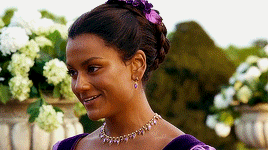
house: gryffindor
date of birth: january 31, 1881
pronouns: she/her
number of open beds: one (1)
other dormmates: seraphina hopper (thatravenpuffwitch) | eleanor parkmoore (ellie-e-marcovitz) | carmine elderberry (potionboy3)
Pembroke, Max — starts Hogwarts in 1892

house: hufflepuff
date of birth: october 31, 1880
pronouns: he/him
number of open beds: one (1)
other dormmates: jim hexley (the-al-chemist) | lysander mercury (slytherindisaster) | jesse seymour (endlessly-cursed)

𝗪𝗪𝟭 & 𝗙𝗕𝗔𝗪𝗧𝗙𝗧 𝗘𝗥𝗔
Lovell, Ophelia — starts Hogwarts in 1904

house: hufflepuff
date of birth: november 3, 1892
pronouns: she/her
number of open beds: four (4)
other dormmates: tbd
Lynch, Aisling — starts Hogwarts in 1918

house: hufflepuff
date of birth: april 22, 1907
pronouns: she/her
number of open beds: two (2)
other dormmates: willa stagg (kc-and-co) | jocelyn somerset (endlessly-cursed)
O’Neill, Rory & O’Shea, Colm — start Hogwarts in 1905
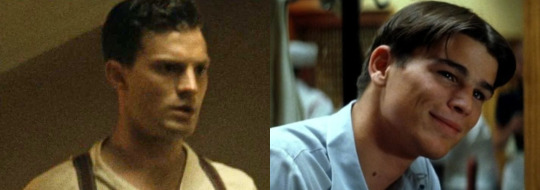
house: gryffindor
date of birth: may 8, 1894 (rory) & august 27, 1894 (colm)
pronouns: he/him
number of open beds: three (3)
other dormmates: tbd
Sullivan, Linus — starts Ilvermorny in 1905

house: wampus
date of birth: november 26, 1893
pronouns: he/him
number of open beds: four (4)
other dormmates: tbd

𝗛𝗣𝗛𝗠
O’Donnell, Conor — starts Hogwarts in 1984

house: ravenclaw
date of birth: august 18, 1973
pronouns: he/him
number of open beds: one (1)
other dormmates: talbott winger | andre egwu | victor ketsuki

𝗠𝗜𝗦𝗖𝗘𝗟𝗟𝗔𝗘𝗡𝗢𝗨𝗦 𝗘𝗥𝗔𝗦
Valdez, Camila — starts Hogwarts in 1991

house: slytherin
date of birth: september 19, 1979
pronouns: she/her
number of open beds: four (4)
other dormmates: tbd
Wraxall, Nicholas — starts Hogwarts in 2000

house: hufflepuff
date of birth: february 2, 1989
pronouns: he/him
number of open beds: three (3)
other dormmates: harker hartford (potionboy3)

𝗛𝗣𝗠𝗔
Whitten, Jack — starts Hogwarts in 2008

house: slytherin
date of birth: february 28, 1997
pronouns: he/him
number of open beds: one (1)
other dormmates: maxim raeburn (potionboy3) | isander yaxley (gaygryffindorgal) | levi vecellio (nicos-oc-hell)
Whitten, Thea — starts Hogwarts in 2008

house: gryffindor
date of birth: may 29, 1997
pronouns: she/her
number of open beds: two (2)
other dormmates: mary ann von dynne (endlessly-cursed) | hester gleason-kearney (cursebreakerfarrier)

𝗡𝗘𝗫𝗧 𝗚𝗘𝗡𝗘𝗥𝗔𝗧𝗜𝗢𝗡
Battersea, Luke — starts Hogwarts in 2011

house: gryffindor
date of birth: july 21, 2000
pronouns: he/him
number of open beds: three (3)
other dormmates: joaquin valdez
Cozens, Jude — starts Hogwarts in 2016
(no fc yet, still looking for the one that fully clicks)
house: gryffindor
date of birth: june 13, 2005
pronouns: he/him
number of open beds: three (3)
other dormmates: scott morris (potionboy3)
O’Donnell-Lee, Declan — starts Hogwarts in 2012?

house: slytherin
date of birth: september 1, 2001 (2004 instead maybe?)
pronouns: he/him
number of open beds: four (4)
other dormmates: tbd
Pembroke, Sophie — starts Hogwarts in 2011

house: ravenclaw
date of birth: january 7, 2000
pronouns: she/her
number of open beds: three (3)
other dormmates: victoire weasley
Power, Quinn — starts Hogwarts in 2016?

house: slytherin
date of birth: december 1, 2004 (2001? 2002? instead maybe)
pronouns: he/him
number of open beds: four (4)
other dormmates: tbd

tag list of a few mutuals with no pressure: @potionboy3 (as you mentioned maybe jude & scott since he’s officially born in 2005 now?) @gaygryffindorgal @endlessly-cursed @legilimenace @cursedvaultss @cursed-herbalist @drinkyoursoupbitch @slytherindisaster
#will delete later… so commenting is preferred#will probably make some new ones later cause might have more ocs
2 notes
·
View notes
Text
1) A Study in Scarlet
(Back to main post)
Originally titled "A Tangled Skein"
Sherlock Holmes was originally "Sherrinford Holmes" with partner John Watson originally "Ormond Sacker"
This is the book that first established the magnifying glass as a tool used by detectives to solve crimes!
Page from the original manuscript:

First Published in Beeton’s Christmas Annual November 1887

Extra Information:
founded by Samuel Orchart Beeton
Beeton’s Christmas Annual was sold to Ward, Lock & Co publishing
ward lock n co founded by ebenezer ward and george lock
Had three works:
"A Study in Scarlet" by A. Conan Doyle, pp. 1–95.
"Food for Powder" by R. André, pp. 96–114.
"The Four-Leaved Shamrock" by C. J. Hamilton, pp. 115–138.
Copy once sold for $156,000 at Sotheby's on 21 June 2007, estimated 75,000-125,000 USD
Original manuscript was rejected by other publishers until Ward, Lock & Co offered and accepted £25 for the copyright
(equivalent to £3,371.95 considering inflation)
he got no royalties, just a flat fee - eventually had to pay two hundred times the original price of sale to get the copyright to that one story back.
Conan Doyle wrote back to ask for a percentage on sales. Here is the publisher's answer of 2 November 1886: Dear Sir, In reply to your letter of yesterday's date we regret to say that we shall be unable to allow you to retain a percentage on the sale of your work as it might give rise to some confusion. The tale may have to be inserted together with some other in one of our annuals, therefore we must adhere to our original offer of £25 for the complete copyright. We are, dear Sir, Yours truly, Ward, Lock & Co.
illustrated by David Henry Friston
this sold originally for one shilling
ward lock n co then republished this outside of beeton’s christmas annual
Lippincott’s magazine commissioned a sequel:
The American editor of LIPPINCOTT'S MAGAZINE read it and decided to commission a sequel. He invited Sir Arthur Conan Doyle to dinner at a London restaurant with the editor and another writer he was trying to court, and during the course of the evening Sir Arthur agreed to another Sherlock Holmes novel and he went home and wrote THE SIGN OF THE FOUR, and the other writer, who was Oscar Wilde, said, "Oh, yeah, sure, I'll give you a short novel," and he went home and scribbled out THE PICTURE OF DORIAN GRAY.
A STUDY IN SCARLET sold for (the equivalent of) $2,951.39 and ran 43,704 words. Six and three-quarters cents a word. SFWA rates are five cents a word.
Page 90, line 23 second paragraph fourth line
copies that are lacking the “I” of “I fancy that he suspected…” are the true first edition, first issues of this magazine
Recorded copies
34 total confirmed
21 in libraries
University of Minnesota - 4
Yale - 3
may have had another two previously
11 complete copies with original wrappers and advertisements
one of which is bound
one has a spine
23 lack original wrappers and/or advertisements
some of which have facsimile replacements for the missing original parts
two copies are signed by ACD
one copy had. an unsigned inscription by him but the page was stolen and now missing
page 90 “I”
14 don’t
18 do
2 not available
11 extra excluded copies
either missing, unknown status, no record, or destroyed
one also might be one of the confirmed copies, matching description
link to facsimile (identical yet modern reprint):
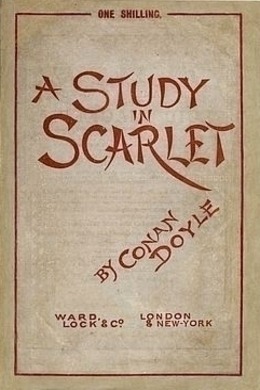
Ward, Lock & Co July 1888
Extra info:
Illustrated by his father Charles Doyle
6 of them
Charles Doyle while he was by then confined to an asylum on account of his epilepsy and alcoholism
one shilling

Philadelphia, J.B. Lippincot March 1890
First Edition
American Edition

Ward, Lock, Bowden & CO (formerly Ward, Lock & Co) 1891
Extra info:
Illustrated by George Hutchinson
Some Covers
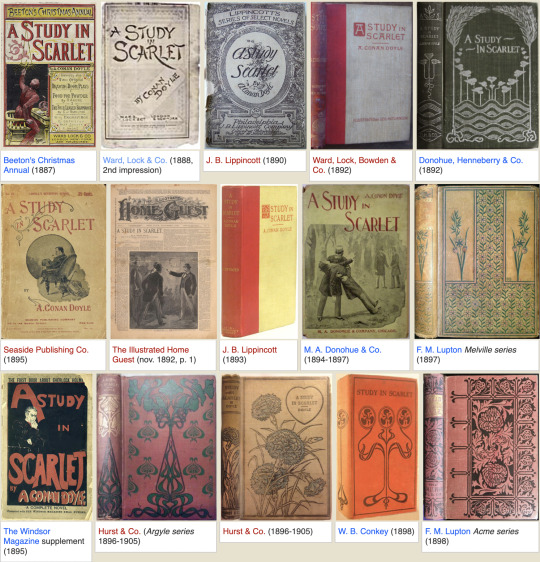
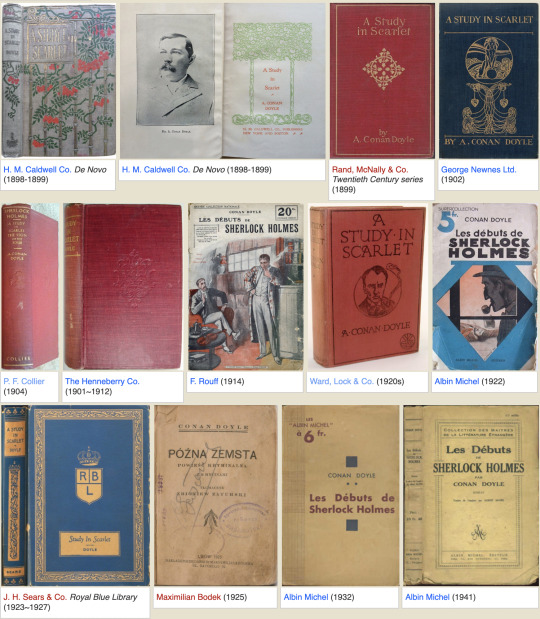
#elementary sherlock#sherlock#sherlock fandom#sherlock holmes#bbc sherlock#sherlock & co#sherlockbbc#cbs elementary#elementary cbs#autism#sherlock autism#acd johnlock#john watson#acd watson#watson#autistic#autistic things#infodump#neurodivergent#booktok#booklr#book review#bookworm#books & libraries#reading#bookblr#books#books and reading#publishing#sir arthur conan doyle
3 notes
·
View notes
Text

Jean Hersholt (July 12, 1886 – June 2, 1956)
9 notes
·
View notes
Text
SAINT OF THE DAY (October 1)

On October 1, Catholics around the world honor the life of St. Thérèse of the Child Jesus, or St. Thérèse of Lisieux on her feast day.
St. Thérèse was born on 2 January 1873 in Alençon, France, to pious parents, both of whom were canonized by Pope Francis on 18 October 2015.
Her mother died when she was four, leaving her father and elder sisters to raise her.
On Christmas Day 1886, Thérèse had a profound experience of intimate union with God, which she described as a “complete conversion.”
Almost a year later, in a papal audience during a pilgrimage to Rome, in 1887, she asked for and obtained permission from Pope Leo XIII to enter the Carmelite Monastery at the young age of 15.
On entering, she devoted herself to living a life of holiness, doing all things with love and childlike trust in God.
She struggled with life in the convent but decided to make an effort to be charitable to all, especially those she didn’t like.
She always performed little acts of charity and sacrifices, not caring how unimportant they seemed.
These acts helped her come to a deeper understanding of her vocation.
She wrote in her autobiography that she had always dreamed of being a missionary, an Apostle, a martyr – yet she was a nun in a quiet cloister in France. How could she fulfill these longings?
“Charity gave me the key to my vocation. I understood that the Church had a Heart and that this Heart was burning with love.
I knew that one love drove the members of the Church to action; that if this love were extinguished, the apostles would have proclaimed the Gospel no longer.
The martyrs would have shed their blood no more.
I understood that Love comprised all vocations, that Love was everything, that it embraced all times and places...in a word, that it was eternal!
Then in the excess of my delirious joy, I cried out: O Jesus, my Love...my vocation, at last I have found it...My vocation is Love!”
Thérèse offered herself as a sacrificial victim to the merciful Love of God on 9 June 1895, the feast of the Most Holy Trinity.
The following year, on the night between Holy Thursday and Good Friday, she noticed the first symptoms of tuberculosis, the illness which would lead to her death.
Thérèse recognized in her illness the mysterious visitation of the divine Spouse and welcomed the suffering as an answer to her offering the previous year.
She also began to undergo a terrible trial of faith, which lasted until her death on 30 September 1897.
“Her last words, ‘My God, I love you,’ are the seal of her life,” said Pope John Paul II.
Since her death, millions have been inspired by her ‘little way’ of loving God and neighbor.
Many miracles have been attributed to her intercession. She had predicted during her earthly life that “My Heaven will be spent doing good on Earth.”
She is popularly known in English as the 'Little Flower of Jesus,' or simply the 'Little Flower.'
Pope Pius XI beatified Thérèse on 29 April 1923 and canonized on 17 May 1925.
Saint Thérèse was proclaimed a Doctor of the Church by Pope John Paul II in 1997 — 100 years after her death at the age of 24.
She is only the third woman to be so proclaimed, after Saint Catherine of Siena and Saint Teresa of Avila.
She is the patron saint of missions and of florists.
St. Thérèse wrote:
'You know well enough that Our Lord does not look so much at the greatness of our actions, nor even at their difficulty, but at the love with which we do them."
4 notes
·
View notes
Photo

LETTERS FROM AN AMERICAN
April 30, 2023
HEATHER COX RICHARDSON
MAY 1, 2023
Thanks to Heather Timmons, White House editor for Reuters, whom I met a lifetime ago in summer 2016 as we tried to figure out what on earth was going on in the Republican Party, I got to hear President Biden’s speech at the White House Correspondents’ Dinner in person last night. Speaking in the giant hall in the Washington Hilton where the event was held, the president was relaxed and funny, poking fun at himself, entrepreneur Elon Musk, former Fox News Channel host Tucker Carlson, and House speaker Kevin McCarthy (R-CA). Finally, he embraced the Dark Brandon meme that suggests he has a laser-eyed alter-ego who ingeniously defeats his opponents.
Biden also joked about his age, most memorably when he said he believes in the First Amendment that protects freedom of the press, and “not just because my good friend Jimmy Madison wrote it.”
But right now, the First Amendment itself is no joke. A member of the U.S. press corps is in prison in Russia on trumped-up charges of “espionage.” Wall Street Journal reporter Evan Gershkovich was covering Russia’s mercenary military organization the Wagner Group when Russian officials arrested him on March 29. The U.S. State Department has called him “wrongfully detained,” which means the government sees him as a political hostage.
In contrast, around 2,600 people showed up last night to witness humorist Roy Wood Jr. make fun of the president and vice president to their faces. It was theater, but theater that demonstrates an important principle: our government has no right to silence our criticism of it.
The Framers of our government enshrined the right to freedom of the press in our Constitution along with the right to gather together, to practice any religion we want (including none at all), the right to say what we want, and the right to ask our government to do (or not to do) things. After writing a new constitution that created a far stronger national government than existed under the Articles of Confederation, which had created the government since 1777 (although the Articles were not ratified until 1781), the Framers designed the ten amendments that make up the Bill of Rights to hold back government power.
The power to control what citizens can publish about the government would give leaders the power to destroy democracy. A free press is imperative to keep people informed about what leaders are doing. Lose it, and those in power can do whatever they wish without accountability.
From the beginning of the American republic, though, the press was openly partisan. This meant the president worked quite closely with newspaper reporters from his own party, while ignoring, or sometimes even trying to silence, his opponents. By the 1880s the country had begun to turn against the partisan press and to “independent” newspapers, and the number of papers took off.
No longer advocates for a party position and eager to attract readers, reporters began to look for new, exciting stories. And not much was more exciting in 1886 than a marriage in the White House. On June 2 of that year, 49-year-old President Grover Cleveland married 21-year-old Frances Folsom, who had been his unofficial ward, in the Blue Room.
Reporters had dogged their courtship (many thought he was interested in her more age-appropriate mother), and they flocked after the newlyweds, finally prompting the irritated president to ask his personal secretary to keep them away. But while the president was angry at the scrutiny, editors recognized a good story, and by the end of Cleveland’s first term, a reporter had figured out he could just stay at the White House and write columns based on interviews with people coming from meetings with the president. Other papers immediately stationed their own people at the White House.
In Cleveland’s second term, which started in 1893, his private secretary worked directly with the press. Through the next few presidencies, the role of press secretary began to take shape. Theodore Roosevelt relished attention from reporters. When his shy successor William Howard Taft shunned them, they complained he was hiding things.
So, shortly after he took office in 1913, President Woodrow Wilson held the nation’s first press conference, only to complain both that reporters were quoting statements he considered off the record, and that the conferences were a free-for-all in which anyone could shout out questions, often ones Wilson found Irritating (like his opinion about Groundhog Day).
In 1914, rumors circulated that Congress might begin to choose which reporters would be allowed at Wilson’s press conferences. In alarm, eleven White House reporters organized the White House Correspondents’ Association (WHCA). In 1921, as part of their annual election of officers, fifty members of the growing WHCA held a dinner. With former newspaperman Warren G. Harding in the White House, they were in a celebratory mood, despite Prohibition (which they ignored). Taking their cue from the famous Gridiron Club, which held dinners where they roasted politicians, WHCA members poked fun at the administration and Congress.
While at first the reporters simply wanted access to the president, as the WHCA became an established force it came to work for transparency more generally, recognizing that journalists are the main eyes and voice of the people. It now protects press passes for journalists who regularly cover the White House and assigns seats in the briefing room. It also funds scholarships for aspiring journalists and gives journalism awards; the annual dinner is their main fundraising event.
In the modern era there is plenty of criticism over the glitzy dinner and what seems too much chumminess between journalists and lawmakers. But the demonstration that the government cannot censor the press is valuable. For the four years of the past administration, the president refused to attend the dinner and barred his staff and other officials from attending.
The same president called the press the “enemy of the people,” encouraging his supporters to attack reporters. Angry at negative stories about him from Voice of America, Trump replaced the independent editor of the U.S. Agency for Global Media, which oversees VOA, with Michael Pack, a close ally of Trump strategist Steve Bannon. Pack set out to turn the channel into a pro-Trump mouthpiece. U.S. District Judge Beryl Howell later concluded that Pack’s firing, disciplining, and investigating of journalists who didn’t toe the line violated the First Amendment.
The dance between the government and the press is intricate and full of missteps, but last night, at an event where journalists wore pins that read, “I Stand With Evan,” this historian found the public reminder that the president must answer to journalists, with grace if at all possible, oddly moving.
—
LETTERS FROM AN AMERICAN
HEATHER COX RICHARDSON
#First Amendment#Freedom of the Press#Letters From An American#Heather Cox Richardson#history#the press#White House Correspondents’ Dinner
2 notes
·
View notes
Text
Hyde's place in the history of the penalty
IT'S amazing what sometimes makes its way into your inbox. Recently, and thanks to Mike Smith who is better known as Mossley Smiffy, I was alerted to the fact that the first penalty in the history of football was scored by a former Hyde player.
The man in question was James McLuggage who spent a season with the Victorian Tigers in 1889-90. He played at least 20 matches, scoring a dozen goals.
At the time Hyde FC were a very ambitious club, in fact one with ideas above their station, and it was this attitude that led to the famous FA Cup tie with Preston North End (who were quite a lot bigger).
In common with the Invincibles and other Football League clubs they began to talk of importing talent from Scotland — something that wasn't cheap. But the Athletic News said Hyde had a free purse and there was even talk of signing a player from Glasgow Rangers Reserves on wages of £3 a week (which would equate to about £270 in today's money).
That may even have been McLuggage, who made at least one appearance for the Ibrox first team, but he joined Hyde from Accrington.
Hyde spent lavishly in other ways too. They paid clubs like Belfast Athletic to come and play them. J Fairbrother and Son (Grange Road North was then called Fairbrother Street) started erecting a grandstand. They joined the Lancashire League and even sold photographs of the players.
Of course they couldn't afford it, and by the mid-1890s the original Hyde FC had folded. A new club was established by Charlie Barber, landlord of the Gardeners, Lumn Road.
But back to the famous Jim McLuggage. Here's how his historic penalty exploits are recorded on scottishsporthistory.com:
"One of the cornerstones of football was born in 1891, out of frustration at cynical fouls which prevented a goal. The penalty kick was launched at a meeting of the International FA Board, held in the Alexandra Hotel, Glasgow, on June 2, 1891.
"It was one of the most momentous changes to the laws of the game, and while it was intended for the following season it did not take long to make an impact. The first award of a penalty took place just four days later, on June 6, 1891, at Mavisbank Park, Airdrie.
"Larkhall side Royal Albert defeated Airdrieonians 2-0 to lift the Airdrie Charity Cup and one of their players made history. Around 2,000 fans witnessed 'what is in all likelihood the first case of a referee granting a foul under the new law for tripping, holding, or handling the ball within 12 yards of goal'.
"Few people, least of all the players, knew what to expect: 'That the new law was a puzzle to the players was evident, all appeared to think they could stand in front of the ball as of old, but imagine the astonishment of both players and spectators when Connor alone was left between the sticks, while his ten companions had to go six yards behind the ball along with the Royalists.
" 'In simple, the new law means that but two men settle such infringement, the kicker and opposing goalkeeper, and a goal is a moral certainty with half-good management'.
"The main protagonists in this little scene can all be identified. The referee was James Robertson of 5th King's Royal Volunteers, who lived in Partick and represented the Southern Counties on the Scottish FA committee. The goalkeeper was the veteran James Connor, who had a Scotland cap to his name.
"And most importantly, the scorer was James McLuggage.
"Born in Ireland around 1865, James and his family moved to Scotland when he was a small boy and at some stage dropped a letter from their original name of McCluggage. He started his football career with Cowlairs, and was good enough to be selected for Glasgow against Sheffield in 1886.
"When he moved to Larkhall he turned out for Royal Albert and the Motherwell Times in 1888 described how a howl of joy and triumph arose from the Larkhall supporters’ when he took the field.
"McLuggage also recorded occasional appearances for Third Lanark and Rangers before turning professional with Accrington in 1889. However, although he played in eight Football League matches, it was not a success.
"By the end of the year he had joined Hyde and he was back in Scotland with Royal Albert in 1891, where he remained for at least four years.
"His sole claim to football fame is that momentous penalty. He died in Larkhall on November 18, 1949."
2 notes
·
View notes
Text
Hotels near Tower Bridge: Facts & Places to visit
A bascule and suspension bridge, Tower Bridge in London is one of the most iconic architectural landmarks in the city of London. The neo-Gothic style of architecture displayed in the bridge's engineering, the bridge was constructed to provide better access to the East End of London city. If you are looking for a hotel near Tower Bridge London UK, go for it. It will be a glorious experience to stay close to this marvel that has not only offered better connectivity to the city but also holds immense historical significance.

Fact: Hydraulic-based operations
If you visit the Engine rooms within Tower Bridge, you will be able to find original steam machines used to operate the bascules of the tower. Till 1974, these bascules were worked with hydraulic pumps that were powered by coal-burning steam engines. However, since then they have been replaced by an electro-hydraulic system or an electrical and oil-driven system. From then on, it has only taken 5 minutes to raise the Tower Bridge.
Fact: The Royal family inaugurated the Tower Bridge
The Prince of Wales who became the future King Edward VII and his wife, the Princess of Wales inaugurated this bridge on 30th June 1894 after its construction was complete. A huge celebration followed as the opening of this bridge was a historic event for London. Even after 128 years later, this bridge remains one of the most visited spots in the city. Posh hotels in London near Tower Bridge keep popping up as people wish to stay closer to the Tower Bridge, the Tower of London and the River Thames.

Before this bridge had opened, Tower Subway was used by the people that ran under the Thames.
Fact: It took 8 years to build Tower Bridge
The instruction of Tower Bridge started in 1886 and was finished in 1894. The two massive piers were built first on foundations that had been sunk in the riverbed. It took the hard efforts of 5 major companies and 432 construction workers to finish the marvel that is the Tower Bridge. The framework of the bridge took up to 11,000 tons of steel and it is then covered in Cornish granite and Portland stone. If you ever stay at Tower Suites hotel by Blue Orchid, you will be able to gaze at this bridge from your hotel room.
Fact: Design selection
The current design of Tower Bridge that we see in London was chosen out of 50 options. The City of London corporation received more than 50 designs when the idea of building a Tower Bridge was proposed. Some of the submitted designs have been put on display at Tower Bridge. If you choose a hotel near tower bridge London UK, you can stop by the bridge and witness these designs by yourself.
After the submission, it took the Special Bridge/ Subway Committee another 8 years to pick from these options. In October of 1884, the design by City Architect Sir Horace Jones and Sir John Wolfe Barry was selected.
Fact: First bridge lift was in 1894
From your room in Tower Suites hotel by Blue Orchid you will be able to witness this marvel lifting. You will only need to get the schedule off from the internet and you can watch the magic of science unfold in front of your eyes.
Did you know that the first lift took place in 1894 on the 30th of June?
While there was a 2-minute delay in the lifting of the bridge, the first vessel that went through the Tower Bridge was the Harbour Master's vessel named Daisy. If you ever wish to see the last three ships that have passed through the Tower Bridge on the day of its inauguration, do visit the Guildhall Art Gallery to see William Lionel Wyllie’s painting ‘Opening of Tower Bridge’ that depicts the same.
Fact: Bus jumping incident over the Tower Bridge
If you ever stay in one of the posh hotels in London near Tower Bridge, you are bound to hear this story from someone. In 1952, on December 30, a bus leapt from one bascule to another. Albert Gunter, the bus driver, was driving bus number 78 on the day over the bridge. The bridge had suddenly begun to open up. Back in those days, a watchman rang the warning bell before the Tower Bridge was lifted. This warning bell was not sounded on that day. Acting swiftly, Gunter accelerated and jumped from one bascule to another, saving everybody's lives on the bus without any injury. He was awarded for his bravery and measures were taken to ensure to avoid such incidents from happening again.
3 notes
·
View notes
Photo
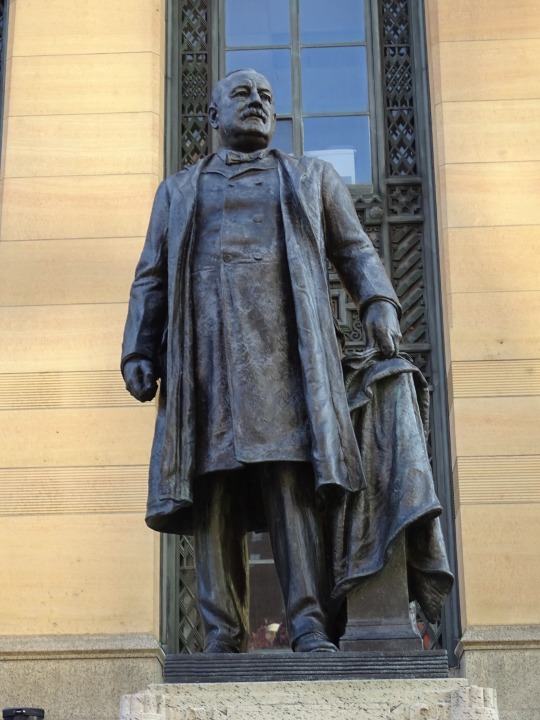
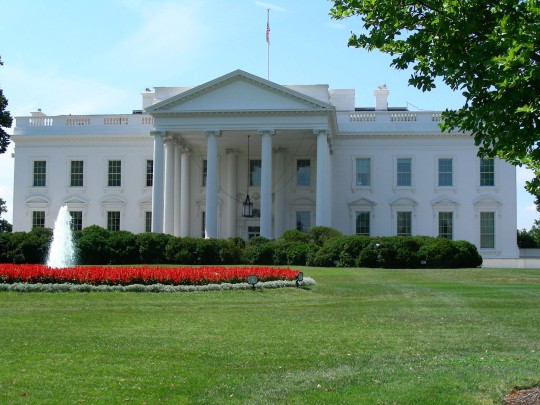


U.S. President Grover Cleveland married Frances Folsom in the White House on June 2, 1886; she was 27 years his junior.
#President Grover Cleveland by Bryant Baker#Grover Cleveland#US president#married#wedding#Buffalo City Hall#New York#sculpture#public art#USA#summer 2018#2009#original photography#vacation#architecture#cityscape#landmark#tourist attraction#Washington DC#White House#James Hoban#1600 Pennsylvania Avenue NW#Neoclassical#façade#2 June 1886#anniversary#US history
2 notes
·
View notes